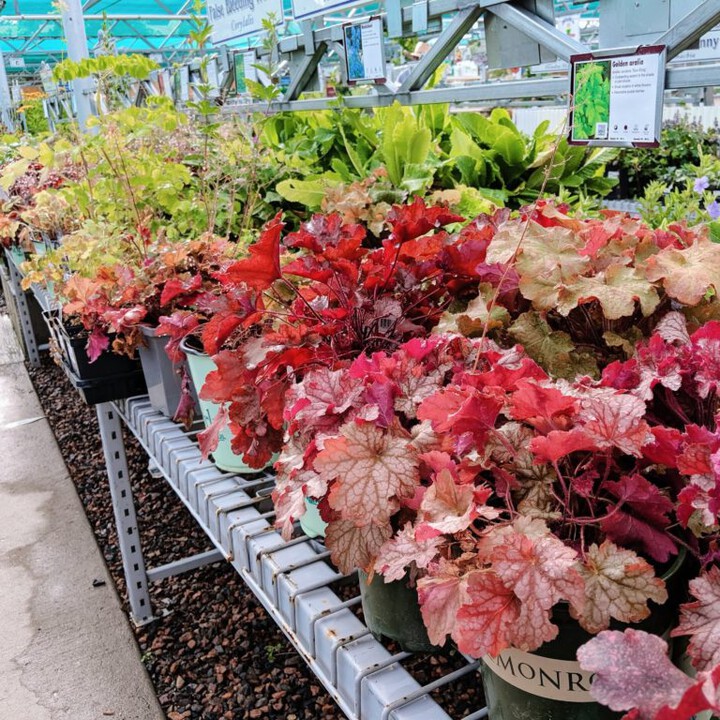Scientific Name: Heuchera
Common Name: Coral Bells, Alum Root
Common Species/Varieties: Plum Pudding, Ginger Ale, Palace Purple
Common Colors: Orange, Purple, Bronze, Red, Green
Plant Type: Leafy colorful foliage
Annual or Perennial: Perennial
Hardiness Zone: 4-9 USDA
Self-Seeding: Not usually
Bloom Season: Late Spring to Early Summer
Grows Best In: Partial to Full Shade
Fun Fact: The fuzzier the leaf, the less water the variety tends to need.

Coral Bells are growing in popularity and with good reason. These plants may be called “Evergreen,” but they come in so many different colors that the title is almost a misnomer! These plants can survive cold temperatures and can even retain their color and shape under a light dusting of snow. Coral Bells are defined mostly by their large, fluffy, ruffly leaves, but their tall stalks of bell shaped flowers are also not to be missed. Trim the stalks of these flowers once they have finished blooming to help encourage healthy, strong foliage growth.
Most Coral Bells will grow to be 12 to 36 inches tall, and 12-18 inches wide. Their beautiful colors and the way that they hold onto those colors through the beginning of the colder months are something that sets them apart from many other plants. Not only do they retain their colors, but those colors just happen to be perfect for the Fall season. Coral Bells typically grow in shaded, woodland areas, so they will do best in at least partial shade, and should be kep moderately moist.

Coral Bells are deer resistant, not likely to be prone to disease, and in the summer their delicate flowers can attract hummingbirds and butterflies. Coral Bell blossoms can be lovely as a cut flower in arrangements as well. The colors of the Coral Bell foliage can be quite striking, with some of the deepest purples available in a plant. Often the leaves are somewhat variegated and can look almost marbled in various tones of the color of the leaves. Coral Bells can be planted in the ground if you have a suitable climate for them to grow in, and they can also be planted in containers that can easily be moved depending on the.